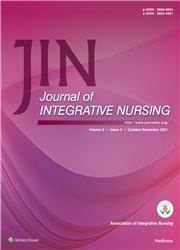A comparison of the effect of Vitamin D and Vitamin E supplementations, alone, and in combination, on reducing the intensity and duration of dysmenorrhea in women: A randomized controlled trial
Q4 Nursing
引用次数: 0
Abstract
Objective: The aim of this study is to compare the effect of Vitamin D and Vitamin E supplementations, alone, and in combination, on reducing the intensity and duration of dysmenorrhea in women who were referred to the Kowsar gynecological clinics of Shahid Motahari Hospital of Urmia University of Medical Sciences. Materials and Methods: A double-blinded clinical trial was conducted on 112 women with dysmenorrhea who were randomly allocated into the four study groups. Finally, 100 women complete the study and received capsules containing a placebo (n = 25), 1000 IU of Vitamin D (n = 25), 400 mg of Vitamin E (n = 25), and 1000 IU of Vitamin D + 400 mg of Vitamin E (n = 25) every 24 h for 2 consecutive months at the beginning of the menstrual period. The pain intensity and duration among groups were compared before and after the intervention. Results: The mean menstrual pain duration in all three experimental groups (Vitamin E, Vitamin D, and the combination of them) was lower than the placebo group (all P < 0.05), and the mean pain intensity scores in all three experimental groups were significantly lower than the placebo group (all P < 0.05). The results (means) for all of the drugs administered at the end of the 2nd month were better than the 1st month (all P < 0.01). Conclusions: Vitamin E and Vitamin D, as well as their combination, are recommended as an effective and safe treatment for the management of the complications of dysmenorrhea.比较维生素D和维生素E补充,单独和联合,对减少妇女痛经的强度和持续时间的影响:一项随机对照试验
目的:本研究的目的是比较维生素D和维生素E补充,单独和联合,对减少妇女痛经的强度和持续时间的影响,这些妇女被转诊到乌尔米娅医科大学Shahid Motahari医院的Kowsar妇科诊所。材料与方法:采用双盲临床试验方法,将112例女性痛经患者随机分为4组。最后,100名女性完成了这项研究,并在月经初期连续两个月每24小时服用含有安慰剂(n = 25)、1000 IU维生素D (n = 25)、400 mg维生素E (n = 25)和1000 IU维生素D + 400 mg维生素E (n = 25)的胶囊。比较干预前后各组疼痛强度和持续时间。结果:三个试验组(维生素E、维生素D及其联合用药)月经疼痛的平均持续时间均低于安慰剂组(均P < 0.05),平均疼痛强度评分均显著低于安慰剂组(均P < 0.05)。2月末各用药结果(均值)均优于1月末(均P < 0.01)。结论:维生素E和维生素D及其联合应用是治疗痛经并发症的一种安全有效的治疗方法。
本文章由计算机程序翻译,如有差异,请以英文原文为准。
求助全文
约1分钟内获得全文
求助全文
来源期刊

Journal of Integrative Nursing
Nursing-General Nursing
CiteScore
0.40
自引率
0.00%
发文量
3
审稿时长
17 weeks
 求助内容:
求助内容: 应助结果提醒方式:
应助结果提醒方式:


